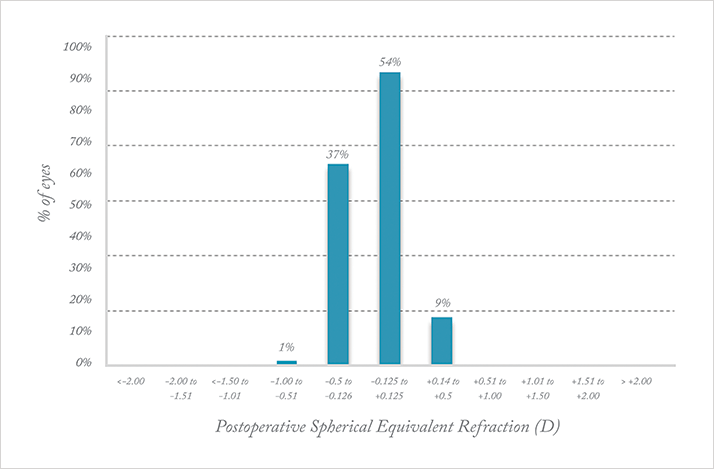
Current excimer laser technology uses sophisticated algorithms and optimised tools to plan surgery and improve surgical outcomes including visual acuity and night vision. Over the past year, we have assessed the efficacy, predictability, and safety of LASIK for the correction of low to moderate myopia and astigmatism using the SCHWIND AMARIS 1050RS excimer laser. This laser has a repetition rate of 1,050 Hz and an ablation time of 1.3 seconds per diopter*. Its optical system is essentially identical to the SCHWIND AMARIS 750S, and other characteristics including online pachymetry (200 Hz), Intelligent Thermal Effect Control (ITEC), Automatic Fluence Level Adjustment, and particle aspiration are identical to the 750S. In contrast, the AMARIS 1050RS provides seven-dimensional active eye tracking for the first time. This pioneering seventh dimension concerns the time factor and ensures latency-free tracking. To date, 114 eyes with a manifest refraction spherical equivalent (MRSE) from -0.75 to -7.88 D (mean, -3.13 ±1.47 D) and up to 3.50 D of astigmatism (mean, 0.84 ±0.80 D) have been treated at our center. All eyes underwent treatment targeting emmetropia with the AMARIS 1050RS’s nonwavefront-guided aspheric algorithm. Refractive outcomes and corneal HOAs were analyzed pre- and postoperatively. At 3 months, the average MRSE was -0.12 ±0.18 D. All but one eye was within ±0.50 D of intended correction, and all but two had astigmatism of 0.50 D or less. UCVA was 20/20 or better in 96% of eyes, and no eye lost 2 or more lines of BCVA. Additionally, the total corneal HOAs root-meansquare decreased by 0.157 µm, the change in spherical aberration was not statistically significant, and vertical and horizontal coma decreased by 0.049 µm and 0.045 µm, respectively. These results confirm that an aberration-free concept can correct sphere and cylinder and preserve corneal HOAs. *Myopia, without astigmatism, 12.5 mm vertex distance, 6 mm optical zone


